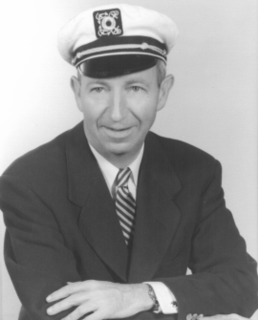Related Research Articles
Beechcraft is a brand of Textron Aviation since 2014. Originally, it was a brand of Beech Aircraft Corporation, an American manufacturer of general aviation, commercial, and military aircraft, ranging from light single-engined aircraft to twin-engined turboprop transports, business jets, and military trainers. Beech later became a division of Raytheon and then Hawker Beechcraft before a bankruptcy sale turned its assets over to Textron.

The Beechcraft Bonanza is an American general aviation aircraft introduced in 1947 by Beech Aircraft Corporation of Wichita, Kansas. The six-seater, single-engined aircraft is still being produced by Beechcraft and has been in continuous production longer than any other aircraft in history. More than 17,000 Bonanzas of all variants have been built, produced in both distinctive V-tail and conventional tail configurations.

The Beechcraft Model 17 Staggerwing is an American biplane with an atypical negative wing stagger. It first flew in 1932.

Wichita Dwight D. Eisenhower National Airport is a commercial airport 7 miles (11 km) west of downtown Wichita, Kansas. It is the largest and busiest airport in the state of Kansas. ICT covers 3,248 acres.

Walter Herschel Beech was an American aviator and early aviation entrepreneur who co-founded the Beech Aircraft Company in 1932 with his wife, Olive Ann Beech, and a team of three others.

Olive Ann Beech was an American aerospace businesswoman who was the co-founder, president, and chairwoman of the Beech Aircraft Corporation. She founded the company in 1932 with her husband, Walter Beech, and a team of three others. She earned more awards, honorary appointments, and special citations than any other woman in aviation history and was often referred to as the “First Lady of Aviation”.

The Kansas Aviation Museum is a museum located in Wichita, Kansas, United States, near 31st South and George Washington Blvd. The building was the former Wichita Municipal Airport terminal from 1935 to 1954.
Parks College of Engineering, Aviation and Technology is a college within Saint Louis University.
Beech Factory Airport is a public use airport located five nautical miles (9 km) east of the central business district of Wichita, a city in Sedgwick County, Kansas, United States. It is privately owned by Beechcraft.
Herbert Rawdon was an American aviation pioneer. He was known throughout his life as Herb Rawdon.

Maryland's first aeronautical event was the flight of 13-year-old Edward Warren from Baltimore in Peter Carne's tethered hot air balloon in 1784.
The Buckley LC-4 "Witchcraft" was an advanced all metal monoplane built by the short-lived Buckley Airplane Company.
Parks College Airline was an defunct airline based in the United States

The Lindbergh Boom (1927–1929) is a period of rapid interest in aviation following the awarding of the Orteig Prize to Charles Lindbergh for his 1927 non-stop solo transatlantic flight in the Spirit of St. Louis. The Lindbergh Boom occurred during the interwar period between World War I and World War II, where aviation development was fueled by commercial interests rather than wartime necessity. During this period, dozens of companies were formed to create airlines, and aircraft for a new age in aviation. Many of the fledgling companies funded by stock went under as quick as they started as the stock that capitalized them plummeted in value following the Wall Street Crash of 1929. The Great Depression dried up the market for new aircraft, causing many aircraft companies to go into bankruptcy or get consolidated by larger entities. Air racing, record attempts, and barnstorming remained popular, as aviators tried to recapture the prizes and publicity of Lindbergh's Transatlantic flight.
Knoll Aircraft Company was an American aircraft manufacturer based in Wichita, Kansas.
Yunker Aircraft Company was an American aircraft manufacturer of the late 1920s

On October 30, 2014, a Beechcraft King Air B200 twin turboprop crashed into a building hosting a FlightSafety International (FSI) training center shortly after taking off from Wichita Mid-Continent Airport in Wichita, Kansas. The pilot, the only person on board, was killed along with three people in the building; six more people in the building were injured.
The history of Wichita details the history of Wichita, Kansas from its initial settlement in the 1860s to the present day.
Edward H. Phillips is an American writer/historian, aviation industry reporter, and aviator who has specialized in the general aviation industry of the central United States—with particular emphasis on the aviation history of Wichita, Kansas and its aircraft manufacturers.

Theodore Arthur Wells was an American aircraft engineer, co-founder of the Beech Aircraft Corporation, and the lead designer of the Beechcraft Model 17 Staggerwing. Wells was also an avid Snipe sailboat racer, winning three national championships and two world championships.
References
- ↑ Edward H Phillips (July 2010). "The Staggerwing goes to war". King Air Magazine: 23.
- ↑ Wichita Eagle. 29 May 1929. p. 7.Missing or empty
|title=(help) - ↑ "Vintage and Historical Aircraft Wings over Kansas" . Retrieved 15 August 2012.
- ↑ Skyways. July 1999.Missing or empty
|title=(help) - ↑ The Pittsburgh Post-Gazette. 4 December 1929. p. 21.Missing or empty
|title=(help) - ↑ "Wichita Pilot Killed in Crash". The Lewiston Daily Sun. 6 February 1930. p. 1.
- ↑ The Wichita Eagle. 16 April 1930. p. 10.Missing or empty
|title=(help) - ↑ "Birth of a Bonanza". Flying Magazine. September 1991.